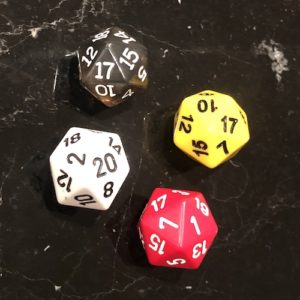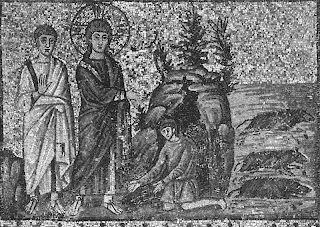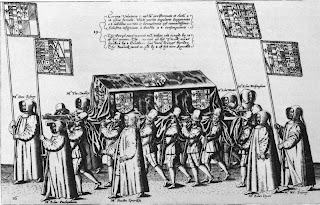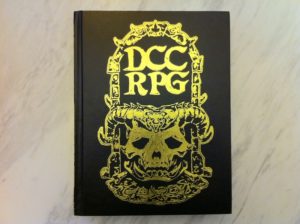So, encumbrance. This is a solved problem, right? We have encumbrance by stone, the much-lauded LotFP encumbrance system, and several others. All these are great, and are certainly an improvement over counting coin weights or pounds.
I used the LotFP system successfully for my 4E hack game. It worked well, though there was some back and forth about how many daggers or torches counted as “an item” (we settled on 5). And, as elegant as the system is, it still requires some adding, and cross-referencing (even if all the info is on the character sheet). Math is for suckers. I think I can do it simpler and still maintain both verisimilitude and the resource management trade-offs.
Thinking more about it, there are really only a few questions I care about regarding encumbrance.
- Attack penalty?
- Skill penalty?
- Movement rates (exploration/combat/escape)?
I am going to focus mostly on the movement in this post, because the attack and skill penalties are going to be more system-bound. In OD&D, which I’ve been focusing on recently, combat has few enough modifiers that encumbrance penalties don’t seem to make much sense (strength does not affect to-hit or damage rolls, and dexterity does not affect armor class). Thieves will take some sort of penalty to their skills when wearing more than leather, but I’ll decide that later.
In my experience, three levels of resolution are usually enough to model interesting phenomena without getting caught up in minutia. So I’ll go with that here too. Light, medium, and heavy encumbrance. This also fits the effects described in Moldvay (120′, 90′, 60′, 30′ movement rates) and is implied in OD&D (see Men & Magic page 15; light, heavy, and armored foot move at 12″, 9″, and 6″, respectively). LotFP used the B/X effects while changing the coin math to slot math.
Here is the proposal.
- nothing OR backpack OR leather armor = no encumbrance (120’/40′)
- backpack + leather OR chain = light encumbrance (90’/30′)
- backpack + chain OR plate = medium encumbrance (60’/20′)
- backpack + plate = heavy encumbrance (30’/10′)
- bulky item + any of the above = heavy encumbrance (30’/10′)
That’s it. Rather than counting items and keeping them under some cap, it turns into a simplified location-based system. Would it reasonably fit in your backpack? Is it a quick access item hanging off of a belt or bandolier? Is it in your hand? Those are the options. I left the 30’/10′ category there out of deference to Moldvay, but to be honest it seems a bit silly; I think I might make the bottom three categories all 60’/20′ (or maybe 30’/20′ to represent adrenaline).
This also means that we can encode this information by where we write the equipment on the character sheet without really requiring anything else. For example, have a carried items zone, a quick access zone, and a backpack zone (an example character sheet is included at the bottom of this post). This will also make it really obvious what is where as opposed to just measuring quantity (which is what the LotFP method does).
If you’re carrying some treasure, and it can reasonably fit in your backpack (say, some gems, a few hundred coins, and bowl), it all still just counts as a backpack. Once you start needing extra sacks or containers, things are either in your hands (see carried items below) or are bulky items such as treasure chests or small statues. Hirelings should be very useful here, and the backpack also becomes the unit of hireling carrying capacity. Handing off or dropping your pack can help, and that seems reasonable to me. Note also that I am using backpack in a general sense here; if your character instead has a series of pouches or a satchel, that will just change (slightly) what is considered a sane amount of contents.
As mentioned above, in addition to items in a backpack, there are also the items that you are carrying and quick access items.
Carried. Most PCs probably have a few different modes regarding what they are holding. For example, torch mode and longbow mode. Writing those modes down will avoid any confusion later.
- Primary configuration. Example (“exploration”): lantern and shield.
- Secondary configuration. Example (“danger”): sword and shield.
- Tertiary configuration. Example (“ranged”): light crossbow.
Players can record as many configurations as they like, though I imagine 2 or 3 should be enough for most characters. It takes a round to switch between configurations, unless the items you are switching to are “quick access” (see below), and you don’t mind dropping what you are carrying, in which case the switch is free (e.g., dropping a torch and drawing a sword).
Quick access. These are objects that are explicitly arranged for access during battle. Things like belted scabbards, slung quivers, boot daggers, and bandoliers all are in this category. More than 3 or 4 such items requires explanation. Even a relatively heavy quick access item (like a two-handed sword in a scabbard on a character’s back) will not be cumbersome, so these items don’t count for encumbrance at all (though as always, common sense should apply in specific situations).
Backpack or pouches. Obviously, backpacks can hold more and do it more efficiently. Also, items stored in backpacks are not accessible during combat, at least not without spending several rounds (I would do this by situation, but something like 1d3 + 1 would be reasonable).
Bulky items. These would include things like a rolled up carpet, a treasure chest, or a chair. Even if it’s not that heavy, carrying a single bulky item consumes both hands and immediately drops your character to the worst encumbrance category. In general, a character can only carry one bulky item in standard exploration mode, though in special cases, or for short periods, exceptions might be made (like a strong character hefting several stacked chests while walking across a single room). The first thing I imagine anyone would do when confronted with danger is to get rid of any bulky items (either by handing them off to a hireling, or dropping them).
 |
| A character sheet using this encumbrance system |
From the looks of it, the best thing about this system is that it makes interaction with the movement rates really simple, without requiring any math at all. If you drop your backpack, you go one category faster. Getting rid of your quick access or carried items isn’t going to help unless you are carrying something bulky. I could imagine using this system in a FLAILSNAILS pickup game without even needing to explain it to the players (what are you carrying? what is on your belt? can the rest of your stuff really all fit in your backpack?) which is certainly not true of encumbrance by stone or the LotFP system.
The main simplification comes from the fact that an almost empty backpack is mechanically equivalent to a stuffed backpack. Situational rulings can correct such outliers easily though. And really, what adventurer doesn’t carry too much stuff?





